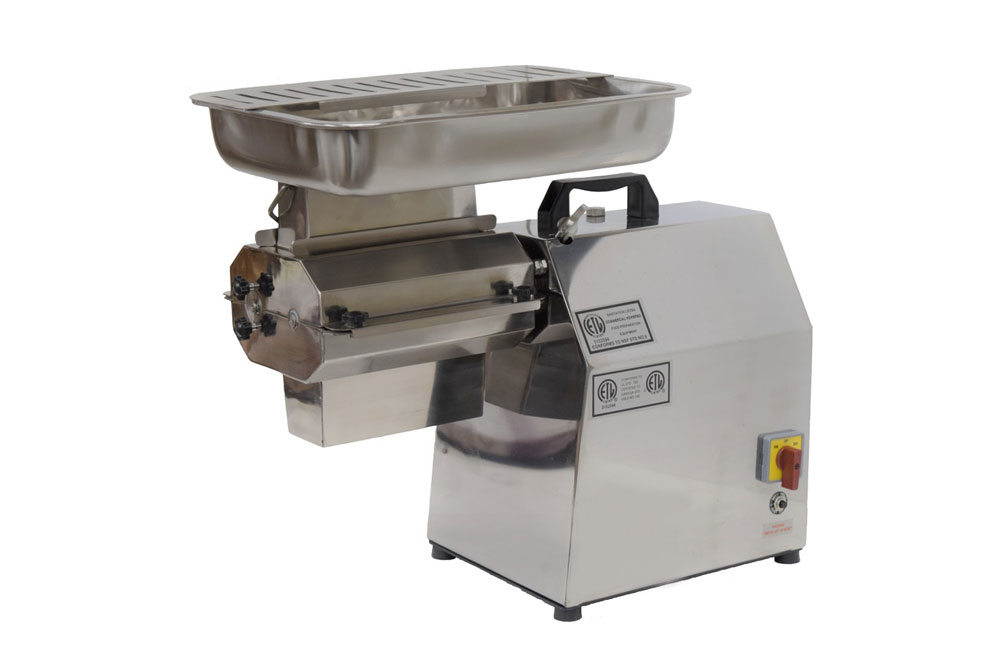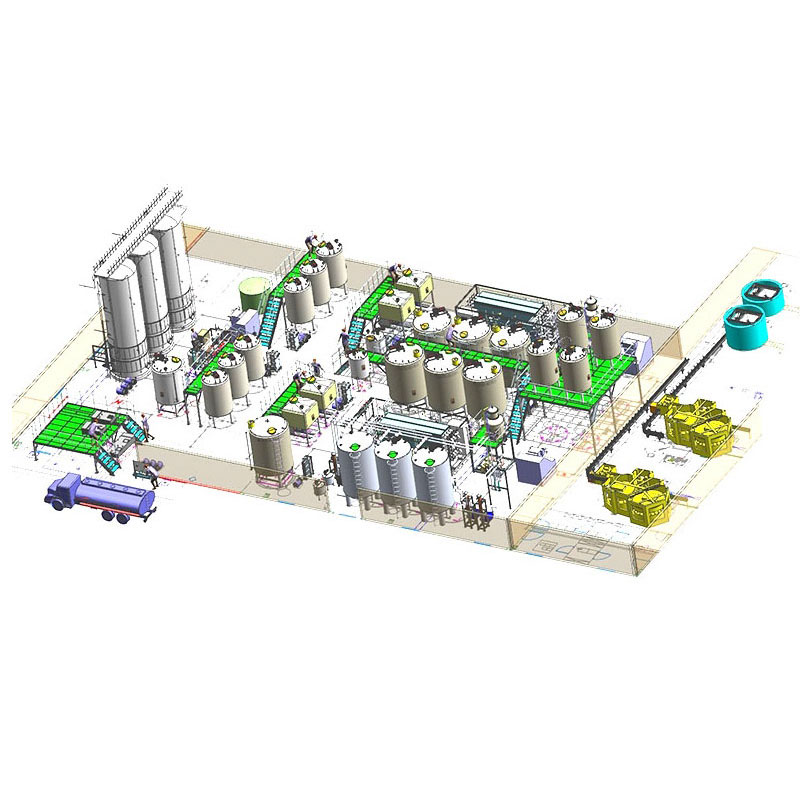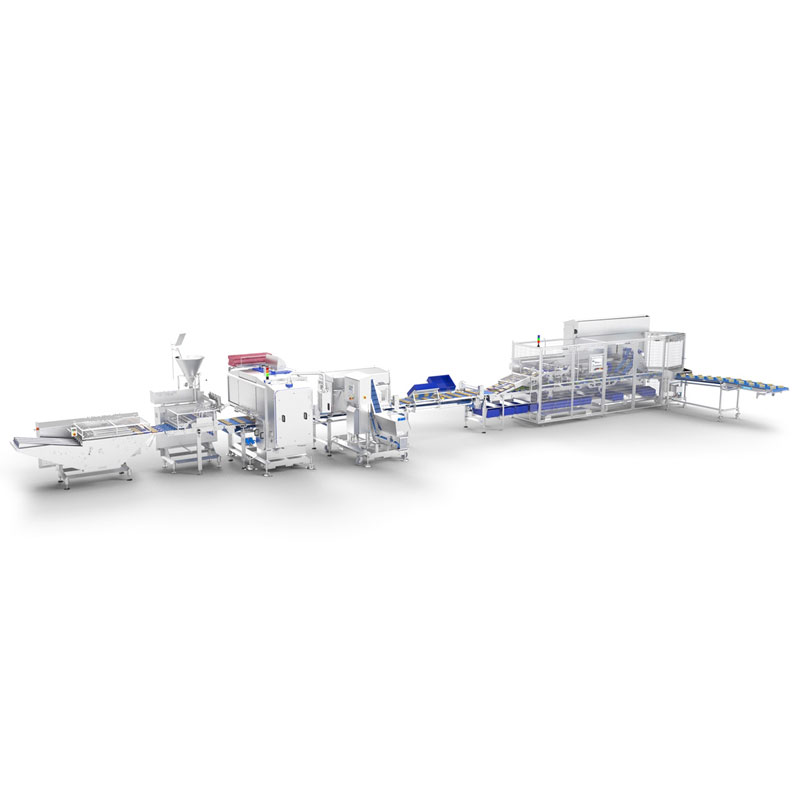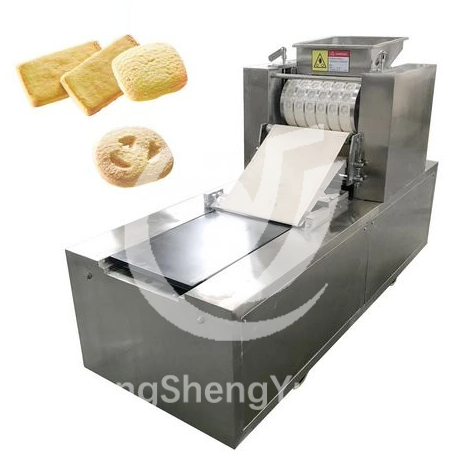Boost Efficiency With Meat Cutters Machines

Introduction to Meat Cutter Machines
Meat cutter machines have become an indispensable tool in the food processing industry. As the demand for high-quality, efficiently prepared meat increases, these machines offer the precision, speed, and consistency that manual cutting simply cannot match. Their role in modern food production cannot be overstated, as they streamline operations, reduce labor costs, and ensure the uniformity of cuts, which is essential for both food safety and customer satisfaction.
In the fast-paced world of food processing, particularly in meat production, the use of a meat cutter machine is often the key to maintaining quality while improving efficiency. Whether in commercial kitchens, butcher shops, or large-scale meat processing plants, these machines have revolutionized the way meat is prepared, cutting down on human error and elevating the consistency and precision of meat products.
Understanding the Role of Meat Cutter Machines in Modern Food Processing
Meat cutter machines are designed to automate the labor-intensive process of slicing, dicing, and chopping meat into uniform pieces. In modern food processing, they serve a critical role by reducing the time spent on manual labor, increasing output, and improving product quality. These machines are especially beneficial for large-scale operations where speed and consistency are crucial.
For instance, in a meat processing facility, a meat cutter machine can easily handle hundreds of kilograms of meat per hour, something that would take several workers much longer to accomplish. Additionally, they reduce the risk of contamination, as human contact with the meat is minimized. These machines also allow for precise cuts, ensuring that the meat is uniformly sliced, which is important for packaging, cooking, and presentation.
Why Meat Cutter Machines Are Essential for Efficiency
Efficiency in the meat processing industry is driven by two main factors: speed and consistency. A meat cutter machine provides both, allowing businesses to keep up with the high demand for processed meats without sacrificing quality. By automating the cutting process, these machines not only reduce the labor required but also optimize the entire production flow.
The speed at which a meat cutter machine operates ensures that meat processing is completed much faster than manual methods. Whether it's a high-speed model for large-scale operations or a smaller machine for niche cuts, the efficiency gained allows businesses to produce more product in less time. In addition, the uniformity of cuts guarantees that every portion of meat meets the same standard, reducing waste and ensuring optimal use of resources.
Types of Meat Cutter Machines
Meat cutter machines are not one-size-fits-all. Depending on the type of meat being processed, the scale of the operation, and the required cuts, different machines are used. Below are some of the most common types found in the industry:
Automatic vs. Manual Meat Cutter Machines: What's the Difference?
The primary difference between automatic and manual meat cutter machines lies in the level of human involvement required. Automatic machines are designed to perform tasks without the need for constant supervision or manual intervention. These machines are equipped with advanced features such as motorized cutting blades, digital control systems, and automatic feeding mechanisms, allowing them to operate continuously and efficiently.
In contrast, manual meat cutters require human operation, typically for smaller tasks or in situations where intricate, specialized cuts are needed. While manual machines may offer more control over the final product, they lack the speed and efficiency of automatic models. In commercial settings, automatic machines are generally preferred for their higher throughput and reduced labor costs.
Bone-In Meat Cutter Machines: Features and Benefits
Bone-in meat cutter machines are specifically designed to handle tougher cuts of meat, including those with bone. These machines feature strong, durable blades and powerful motors that can slice through both meat and bone without causing damage. The ability to process bone-in meat is particularly useful in operations dealing with whole cuts of meat like roasts, chops, or ribs.
These machines often come equipped with safety features to protect operators from accidental injury. The benefits include not only improved efficiency but also the ability to offer a broader range of meat products, such as bone-in steaks or marrow-rich cuts, which are highly prized by consumers.
Bone-Free Meat Cutter Machines: Ideal for Delicate Cuts
For delicate cuts of meat, such as fish, poultry, or lean beef, bone-free meat cutter machines are the ideal solution. These machines are designed with sharp, fine blades that can slice through tender meat without crushing or damaging the texture. Bone-free cutters are particularly beneficial for businesses focusing on high-quality, premium products that require precision and finesse.
They are equipped with adjustable cutting settings, allowing operators to adjust the thickness of the slices for different applications, such as sushi-grade fish or thin deli meats. The smooth operation and ability to create perfect slices make bone-free meat cutter machines a favorite in the foodservice industry.
High-Speed Meat Cutter Machines for Large-Scale Operations
High-speed meat cutter machines are built for large-scale operations where the volume of meat being processed is immense. These machines are designed to handle high throughput, ensuring that meat is cut quickly and consistently without sacrificing quality. They are typically used in meat processing plants, large butcher shops, or factories that produce large quantities of sausages, bacon, or other packaged meats.
High-speed machines can slice meat at incredible rates, significantly reducing labor costs and processing time. They are usually equipped with advanced motor systems, automated feeding mechanisms, and the ability to perform multiple tasks at once, such as slicing, dicing, or even portioning the meat into pre-determined sizes.
Portable Meat Cutter Machines for Small-Scale or Mobile Use
Portable meat cutter machines offer flexibility and convenience, making them ideal for small-scale or mobile operations. These compact machines are lightweight and can be easily moved from one location to another, which is particularly useful for food trucks, pop-up shops, or smaller butcher shops that require a portable solution.
Despite their smaller size, portable meat cutters are still highly efficient, often equipped with sharp blades and adjustable settings to cater to different types of meat. They offer a balance of mobility, power, and performance, making them an essential tool for businesses that operate in various locations or have limited space.
Key Features of a Quality Meat Cutter Machine
When investing in a meat cutter machine, several key features should be considered to ensure that the machine is both effective and long-lasting. These features will vary depending on the type of meat being processed and the scale of the operation.
Sharpness and Durability of Blades: What to Look For
The quality of the blades is one of the most important factors when selecting a meat cutter machine. High-quality, sharp blades ensure clean cuts and reduce the risk of tearing or damaging the meat. Durability is also critical, as blades that wear out too quickly can lead to frequent replacements and downtime.
Look for blades made of high-grade stainless steel or carbon steel, which are resistant to rust and corrosion. Additionally, some meat cutter machines offer self-sharpening blades, which can save time and maintenance costs in the long run.
Motor Power and Speed: Choosing the Right Capacity
The motor power and speed of a meat cutter machine will determine how efficiently it can process meat. A powerful motor ensures that the machine can handle tough cuts and maintain consistent performance over time. For high-volume operations, look for machines with motors that provide enough torque to handle large quantities of meat without straining.
The speed at which a machine operates also plays a crucial role. High-speed models are designed for fast-paced environments, whereas slower machines may be better suited for more delicate or smaller-scale tasks.
Safety Features to Keep in Mind for a Safe Operation
Safety is paramount when working with meat cutter machines. These machines typically have sharp blades that can cause serious injury if not handled properly. To ensure safe operation, look for machines equipped with safety features such as blade guards, automatic shut-off switches, and emergency stop buttons.
Additionally, some models come with safety interlocks that prevent the machine from operating unless all safety mechanisms are properly in place. It’s also important to train employees on safe meat cutting practices and to regularly inspect and maintain safety features.
Ease of Cleaning and Maintenance: The Importance of Hygiene
Cleaning and maintaining a meat cutter machine is essential to ensure food safety and prolong the machine's lifespan. Choose a machine with easy-to-remove parts that can be cleaned thoroughly, including removable blades, trays, and guards. Stainless steel is often the material of choice for its ease of cleaning and resistance to bacteria.
Regular maintenance, such as lubricating moving parts and replacing worn-out components, is also essential to keep the machine running smoothly. Neglecting maintenance can lead to poor performance, increased downtime, and higher repair costs.
Energy Efficiency in Meat Cutter Machines
In today’s world, energy efficiency is a critical factor in selecting any piece of industrial equipment, including meat cutter machines. Energy-efficient models consume less electricity, reducing operational costs and environmental impact. Look for machines that are designed with energy-saving technologies, such as low-energy motors and automatic power-down functions when not in use.
How to Choose the Right Meat Cutter Machine for Your Needs
Choosing the right meat cutter machine involves evaluating several factors, from the scale of your operation to the specific types of meat you process.
Assessing Your Cutting Volume: Small vs. Large Operations
Small operations may benefit from compact, portable machines with lower capacity, while larger meat processing plants require high-speed, heavy-duty machines that can handle large volumes of meat. Understanding your cutting volume and production needs is key to selecting the right machine.
Selecting the Right Blade for Different Cuts of Meat
The type of meat being cut will determine the ideal blade. For example, a blade suited for poultry may differ from one designed for beef or pork. Adjustable blade settings allow for different cut sizes, from thin slices to thicker chops.
Evaluating Space and Portability Requirements for Your Facility
Before purchasing a meat cutter machine, it’s essential to evaluate the space available in your facility. Compact, portable machines are ideal for small kitchens or mobile units, while larger machines are better suited for dedicated meat processing rooms.
Considering Cost vs. Long-Term Investment Value
The upfront cost of a meat cutter machine is important, but long-term value should be the primary consideration. Consider factors such as durability, efficiency, and maintenance costs, which will affect the machine’s total cost of ownership over its lifespan.
How Meat Cutter Machines Work
Understanding how meat cutter machines operate is crucial for ensuring efficient use and maintenance.
Step-by-Step Process of How a Meat Cutter Machine Operates
Meat cutter machines typically operate by feeding meat into a cutting chamber, where rotating blades slice it into the desired size. The operator sets the thickness and speed of the cut, and the machine automatically processes the meat through the blades.
FAQs
Q: What types of meat can a meat cutter machine handle?
A: Meat cutter machines can handle a variety of meats, including beef, pork, poultry, and fish. Some models are specifically designed for bone-in meat, while others are ideal for boneless cuts.
Q: How often should I sharpen the blades of my meat cutter machine?
A: Blades should be sharpened regularly to ensure clean, precise cuts. Depending on the frequency of use, this could be anywhere from weekly to monthly.
Q: Is it difficult to operate a meat cutter machine?
A: Most meat cutter machines are designed to be user-friendly, with digital controls and adjustable settings. However, training is recommended to ensure safe and efficient operation.
Q: How can I reduce maintenance costs for my meat cutter machine?
A: Regular cleaning, blade sharpening, and timely replacement of worn parts can help minimize maintenance costs and extend the machine’s lifespan.
Q: Can I use a meat cutter machine for both small and large-scale operations?
A: Yes, there are meat cutter machines designed for both small-scale and large-scale operations. Smaller, portable models are ideal for food trucks or butcher shops, while larger, high-speed models are suited for industrial-scale meat processing.
Conclusion
The future of meat cutter machines is bright, with continued innovations that make meat processing more efficient, safer, and sustainable. By carefully considering your needs, evaluating the available options, and investing in a high-quality machine, you can streamline your operations, reduce waste, and improve the consistency and quality of your products.
Must-Read Blogs For Chain Restaurants Owner











 Biscuit Making Equipment
Biscuit Making Equipment Carrot Processing Line
Carrot Processing Line Cake Production Line
Cake Production Line Hard Candy Production Line
Hard Candy Production Line
Ready to Get Started?